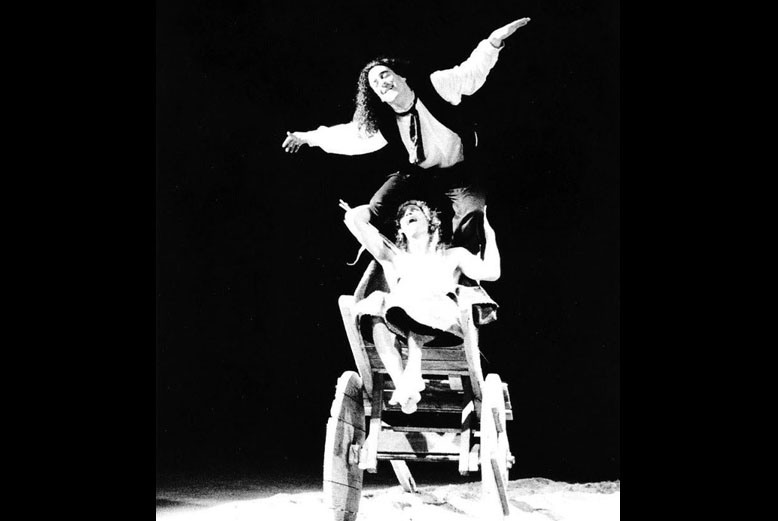
Based on William Shakespeare's King Lear
Adapted by the director
"Editor's Choice."—American Theatre
"Stunning and austerely beautiful… The story is told through symbols: the interplay of light and dark and the intense physicality of the actors. Lear and the Fool, cast out on the heath, take turns pulling each other in a rough wooden cart, lifting its long shafts up, or pulling them down in a crazy ballet in which mad king and sane fool seem two aspects of one whole,"—Marianne Evett, The Plain Dealer
This adaptation of Shakespeare's King Lear, revolved around the court scene of his play, where a delirious Lear, the Fool, and Mad Tom, in a comic charade, fantastically put the King's daughters on trial.
[More]
When the king, lost in humility and amnesia, begins the trial, he enters into the second reality (phantoms) and with the aid of his ragtag team re-enacts the episodes of his life.
The mise-en-scene used a cavernous space filled with sand—to symbolize the shifting nature of reality.
"Spellbinding is the word for this spectacular production. Impermanent seating allows for the entire use of area without a predetermined constricting layout. There is no late seating. Action begins immediately and runs non-stop for one and half hours. Acting is intense, grips and holds one's brains relentlessly from beginning to the very end. The Wasteland is located between here and there, between waking and sleeping, and between life and death. Nothing is logical nor dependable, nor necessarily what it seems… Lear…wallowing in the sand, raves about his evil daughters… He howls like a wolf as daughters Goneril and Regan appear, grotesques, and form a snarling dog and cat fight, epitomizing their beastly levels… Aided by the Fool and Mad Tom, Lear re-enacts the episodes of his life… These are the phantoms of Lear…The script, acting, staging, lighting, indeed, the entire production is mind-boggling…an outstanding production."—Mary Jean Enlow, In Cleveland Heights